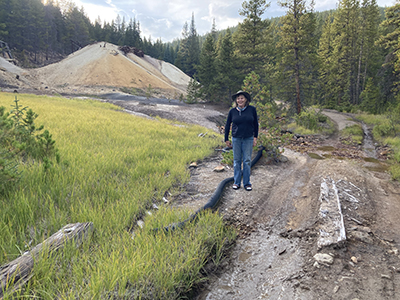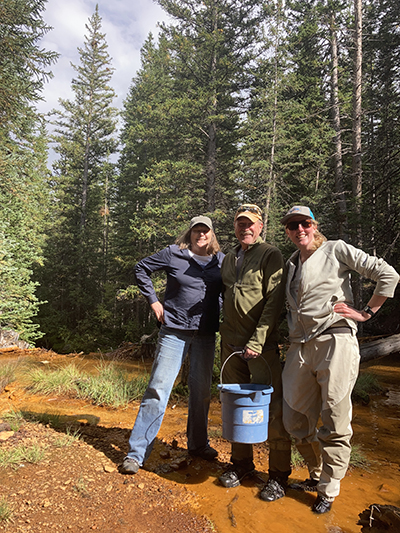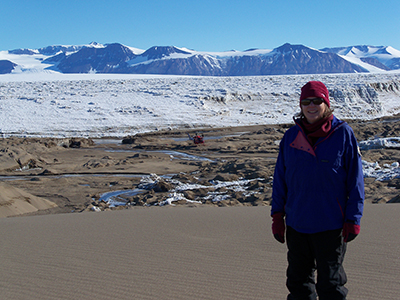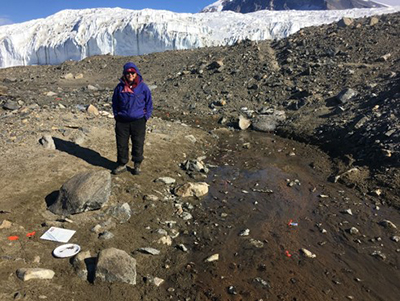Diane M. McKnight
University of Colorado Boulder
Citation
Diane Mcknight has been a major contributor and leader in the aquatic sciences for over three decades. She is unique in the field as she has made seminal contributions in physical, chemical and ecological aspects of natural waters. The breadth and depth of her work has been extraordinary; she is a world-class scholar and a scientific leader in the understanding the complexities of biogeochemical/ecological hydrological interactions of lakes and streams, as well as surface water-groundwater interactions. Diane focused much of her early work on metals and dissolved organic matter (DOM), particularly in acid mine drainage streams. This work pioneered a new understanding of the controls on DOM distributions, transport and fate and elucidated the associated hydrologic controls. This research also contributed to the expanded use of transient storage modeling in stream solute transport studies to account for chemical reactions occurring when water is in storage in hyporheic zones. Her work in Antarctica characterized DOM in lakes where the landscapes have no terrestrial vegetation, so that she was the first to isolate an end-member type of DOM derived primarily from microbial processes as opposed to plant material decomposition. She has been closely involved with the international efforts to understand and characterize various types of DOM, its origin and its influence on water quality. Her most cited papers include one describing the spectrofluorometric characterization of DOM and the role of carbon cycling in lakes and climate change. Her work in Antarctica has also demonstrated the influence of flow dynamics on diatom diversity in stream algal mats. While Diane is an excellent environmental chemist, she has proven to be an equally capable hydrologist, fully recognizing that processes dictating water quality are functions of both fundamental chemical concepts and the physics of water movement. Her intellectual curiosity and ability to synthesize and integrate different types of data have taken her science in many productive directions. Supporting letters refer to her influential mentorship of younger colleagues and students, especially women. In addition to her scientific contributions, Diane has also contributed greatly to our community through leadership roles within a number of organizations, including AGU, where she was the founding editor of the Journal of Geophysical Research: Biogeosciences. As stated in one supporting letter, “With hydrology as a backbone-she has been a trailblazer in linking hydrology to many other disciplines, including geology, biogeochemistry and ecology.” All these accomplishments make her an ideal recipient of the Horton Medal.
— W. Berry Lyons The Ohio State University
Response
I thank the hydrologic sciences community and AGU for this recognition and Berry for his generous comments. I thank my husband, our daughters and my extended family for their encouragement, support and patience. I am grateful for my association with three institutions with strong commitments to hydrology, the Parsons Lab at the Massachusetts Institute of Technology (MIT), the U.S. Geological Survey (USGS), and the University of Colorado. At MIT, I was fortunate to have two outstanding mentors, Professor Francois Morel and Professor Penny Chisholm, and to learn hydrology from leaders in the field, especially Professor Pete Eagleson. I was also fortunate to be on the crew team and spend many hours rowing on the Charles River, which was a motivation to study freshwater ecosystems. Upon graduation, I joined the USGS as a postdoctoral scientist, where my career was influenced by a singular event, the eruption of Mount St. Helens. While studying Spirit Lake, I observed how research by USGS scientists had protected the public and advanced understanding of the volcano. Since then, I have been fortunate to work with many colleagues on continuing, site-based hydrologic research. Through the Toxics Substances Hydrology Program, Dr. Ken Bencala, Dr. Briant Kimball and I embarked on studying mountain streams by employing whole-stream experiments to quantify how the movement of water through the underlying sediments controlled the downstream transport of trace metals. Working with colleagues and students at the University of Colorado, we extended these approaches to studying transport processes in streams in the McMurdo Dry Valleys as part of the MCM Long-term Ecological Research project. Intersecting with this research has been a quest with Dr. George Aiken, Professor Yo Chin and others to understand the biogeochemistry of dissolved organic matter in natural waters. These field campaigns and subsequent analyses are major team efforts, and I am indebted to many colleagues for the success of this research.
Finally, I would like to look ahead by considering the past. I am a descendant of James Buchanan Eads, a famous civil engineer who in 1874 built the first steel arched bridge across the Mississippi River. Eads was a national hero. Since that time, we have reshaped the river and changed its chemistry while also changing the climate that will drive the river’s future. Certainly, advances in hydrology will contribute to the sustainability of communities worldwide. I applaud the young scientists who will carry the hydrologic sciences forward to meet these future challenges.
— Diane M. McKnight
University of Colorado Boulder
Boulder, Colorado
Field Photos





